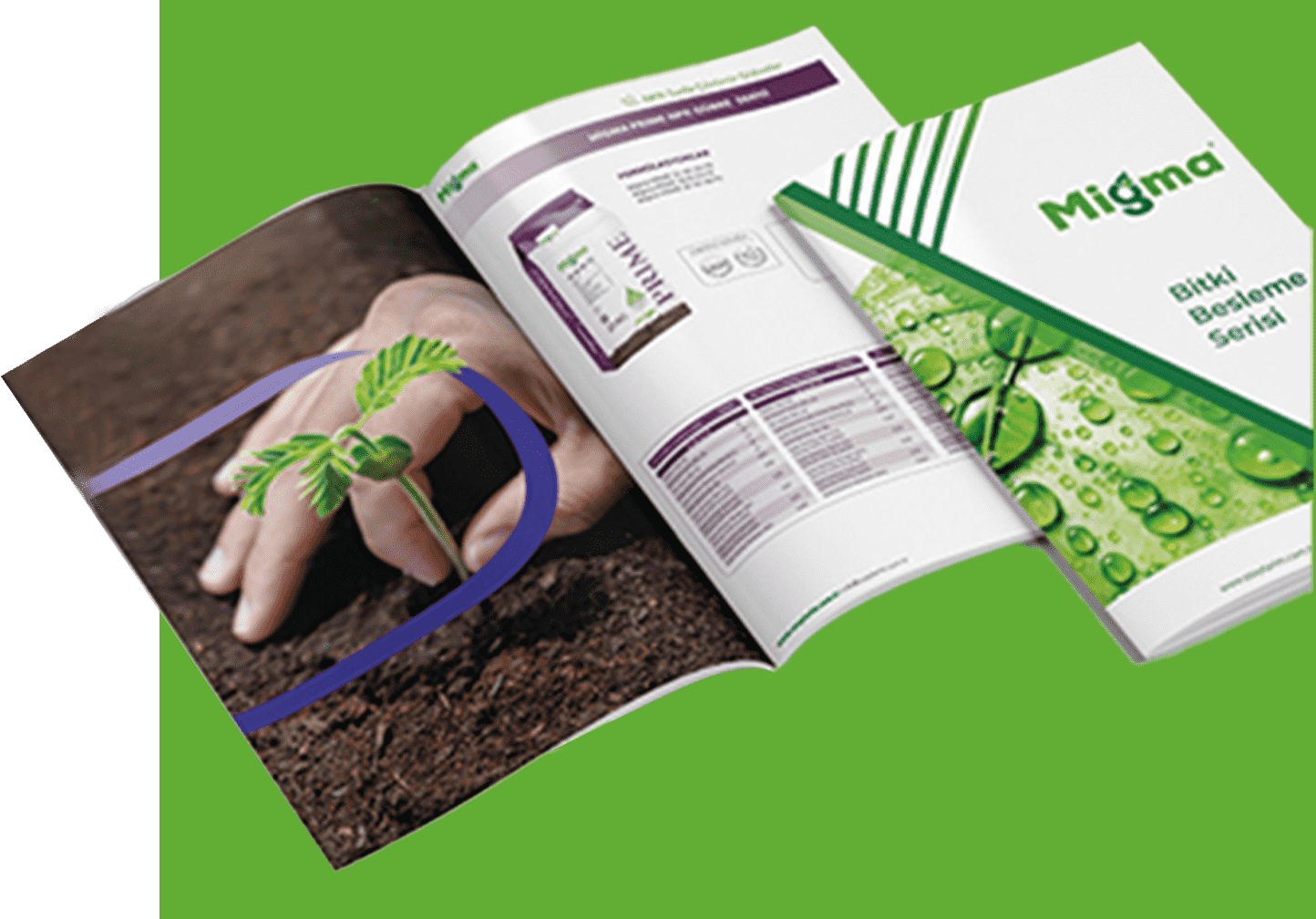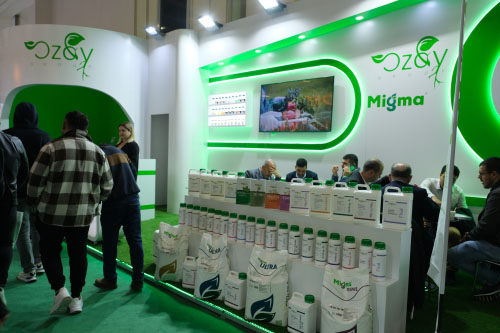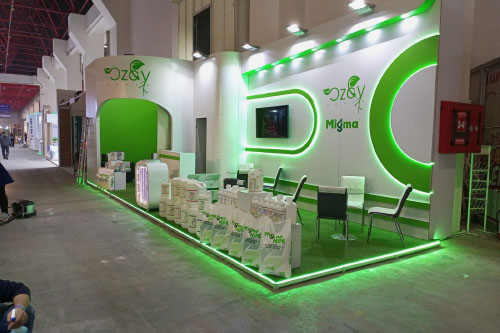Seaweed Fertilizer | Usage | Benefits
Seaweed fertilizer is an organic fertilizer derived from processed seaweed.
Benefits of Seaweed Fertilizer
It contains a variety of nutrients, minerals, and hormones that promote plant growth and development. The main features and benefits of seaweed fertilizer are as follows:
Nutrient Content: Seaweed contains macro and micronutrients essential for plant growth. These elements include nitrogen, phosphorus, potassium, calcium, magnesium, iron, zinc, and copper.
Growth Hormones: Seaweed fertilizer contains natural growth hormones (such as auxins, cytokinins, and gibberellins) that support plant growth and development.
Stress Tolerance: Seaweed increases plants' resistance to environmental stresses such as drought, cold, and salinity.
Biostimulants: Seaweed fertilizer contains biostimulants that strengthen the plant's immune system and increase its resistance to diseases.
Soil Health: Seaweed fertilizer improves soil structure, increases organic matter content, and supports the activity of soil microorganisms.
Root Development: Seaweed promotes root development, helping plants absorb water and nutrients more effectively.
Foliar Application: Seaweed fertilizers can also be applied by spraying onto the leaves. This method allows plants to quickly absorb nutrients through the fertilizer, facilitating faster nourishment.
Liquid Seaweed Fertilizer
Seaweed fertilizer is commonly available in liquid, granular, or powder forms and is widely used in organic farming. It can be applied to a variety of plants, including vegetables, fruits, and ornamental plants, to enhance growth and improve overall plant health.
When is seaweed fertilizer applied?
Seaweed fertilizer can be used at various stages of plant growth and development.
Seedling Planting and Transplanting: When applied during the planting or transplanting of seedlings, seaweed fertilizer encourages root development and increases the plants' resistance to stress conditions. It can be used during soil preparation or planting.
Vegetative Growth Stage: When plants enter a period of rapid growth, seaweed fertilizer supports plant development and ensures that the leaves remain healthy and strong. Regular application during this stage is beneficial.
Flowering and Fruit Set: Seaweed fertilizer provides the necessary nutrients during the flowering and fruit-setting stages, improving fruit quality. Application during this period enhances productivity.
Stress Conditions: When plants are under stress from drought, cold, heat, disease, or pest attacks, applying seaweed fertilizer boosts their resistance to these adverse conditions.
Soil Improvement: Seaweed fertilizer can be used throughout the year to improve soil structure and fertility. It is particularly useful during post-harvest or pre-planting soil preparation.
It is important to follow the instructions and dosage recommended on the product label.
How much Liquid Seaweed Fertilizer is used for 1 donum (1000 m²)?
The amount of liquid seaweed fertilizer to be used depends on the product's concentration and application instructions. However, as a general guide, the typical amount for 1 donum (1000 m²) of land is:
Liquid Seaweed Fertilizer Soil Application:
General Application:
-Mix 1 liter of liquid seaweed fertilizer with 200 liters of water and apply it to 1 donum (1000 m²) of land.
-Repeat the application every 4-6 weeks.
Liquid Seaweed Fertilizer and Foliar Application:
General Application:
-Mix 1 liter of liquid seaweed fertilizer with 400 liters of water and spray it onto the leaves of 1 dönüm (1000 m²) of land.
-Repeat the application every 2-4 weeks.
Seaweed Fertilizer Usage Application Instructions:
-Seedlings and Young Plants: Use at lower concentrations (for example, mix 1 liter of fertilizer with 400 liters of water).
-Mature Plants: You can use at higher concentrations (for example, mix 1 liter of fertilizer with 200 liters of water).
Seaweed Fertilizer Recommendations:
-First Application: Higher concentrations may be preferred for soil preparation before planting or transplanting.
-Regular Maintenance: Regular applications at intervals during the growing season are recommended for ongoing plant health.
-Stress Conditions: More frequent applications can be made under stress conditions such as drought, extreme temperatures, or disease.
Plants Used with Seaweed Fertilizer
Seaweed fertilizer can be applied to a wide range of plants and is generally effective on the following:
Field Crops with Seaweed Fertilizer Use
Grains such as wheat, barley, corn, rice.
Legumes such as soybeans, peanuts.
Industrial crops such as cotton, sunflower.
Vegetables with Seaweed Fertilizer Use
Fruit vegetables such as tomatoes, peppers, eggplants, cucumbers.
Leafy vegetables such as cabbage, spinach, lettuce.
Root vegetables such as carrots, radishes, onions.
Fruit Trees and Shrubs with Seaweed Fertilizer Use
Fruit trees such as apples, pears, peaches, cherries.
Fruit shrubs such as grapes, strawberries, raspberries.
Ornamental Plants and Flowers with Seaweed Fertilizer Use
Flowering plants such as roses, orchids, begonias.
Lawns and grassy areas.
Herbs and Aromatic Plants with Seaweed Fertilizer Use
Aromatic plants such as mint, rosemary, thyme.
Ornamental plants such as lavenders.
Greenhouses and Indoor Plants with Seaweed Fertilizer Use
Indoor plants such as orchids, succulents, ficus.
Vegetables and fruits grown in greenhouses.
Field and Garden Plants with Seaweed Fertilizer Use
Industrial field crops such as potatoes, beets, sugar cane.
Fruit shrubs such as strawberries, raspberries, blackberries.
Seaweed Fertilizer Content
Seaweed fertilizer is commonly used to enhance plant overall health and productivity. It contains many beneficial components that promote plant growth, increase resistance to stress conditions, and support general plant health. It is important to follow the instructions on the product label and determine the appropriate dosage and application frequency based on the plant type.
Factors Affecting the Price of Seaweed Fertilizer:
1.Type of Seaweed: Different types of seaweed have varying nutrient contents and benefits. Species with higher nutrient concentrations may be sold at higher prices.
2.Processing and Production Methods: The processing and manufacturing methods of seaweed fertilizers can also influence their price. Fertilizers produced using organic and environmentally friendly methods are generally more expensive.
3.Quality and Purity: The quality and purity of the product directly affect the price. Higher purity and higher-quality seaweed fertilizers may be sold at higher prices.
4.Packaging and Branding: Brand value and packaging are other factors that can affect the price. Well-known brands and high-quality packaging can increase the price of the product.
5.Quantity: The amount of seaweed fertilizer purchased also influences the price. Products purchased in larger quantities typically have a lower unit price.
6.Seasonal Factors: The harvesting season and seasonal variations can affect the price of seaweed. During certain periods, the availability of seaweed may be lower, leading to higher prices.
7.Transportation and Logistics Costs: The transportation and logistics costs from the production site to the point of sale also influence the price. Shipping costs for long distances can increase the price.
8.Supply and Demand: The market demand and supply of seaweed fertilizer play a key role in determining its price. When demand is high and supply is low, prices increase.
9.Regulations and Certifications: Organic certifications and other legal regulations can impact the cost of the fertilizer. Certified organic seaweed fertilizers are typically more expensive.
10.Additives and Formulation: Additional nutrients or special formulations added to the seaweed fertilizer can also affect its price. Specially formulated or enriched products are likely to be more expensive.
News

 Türkçe
Türkçe
 English
English
 Русский
Русский
 العربية
العربية

